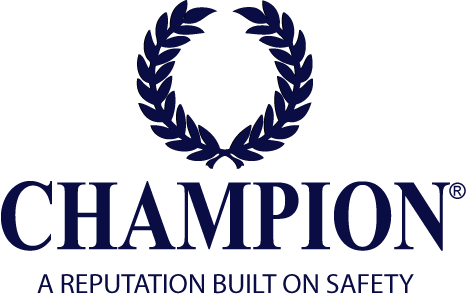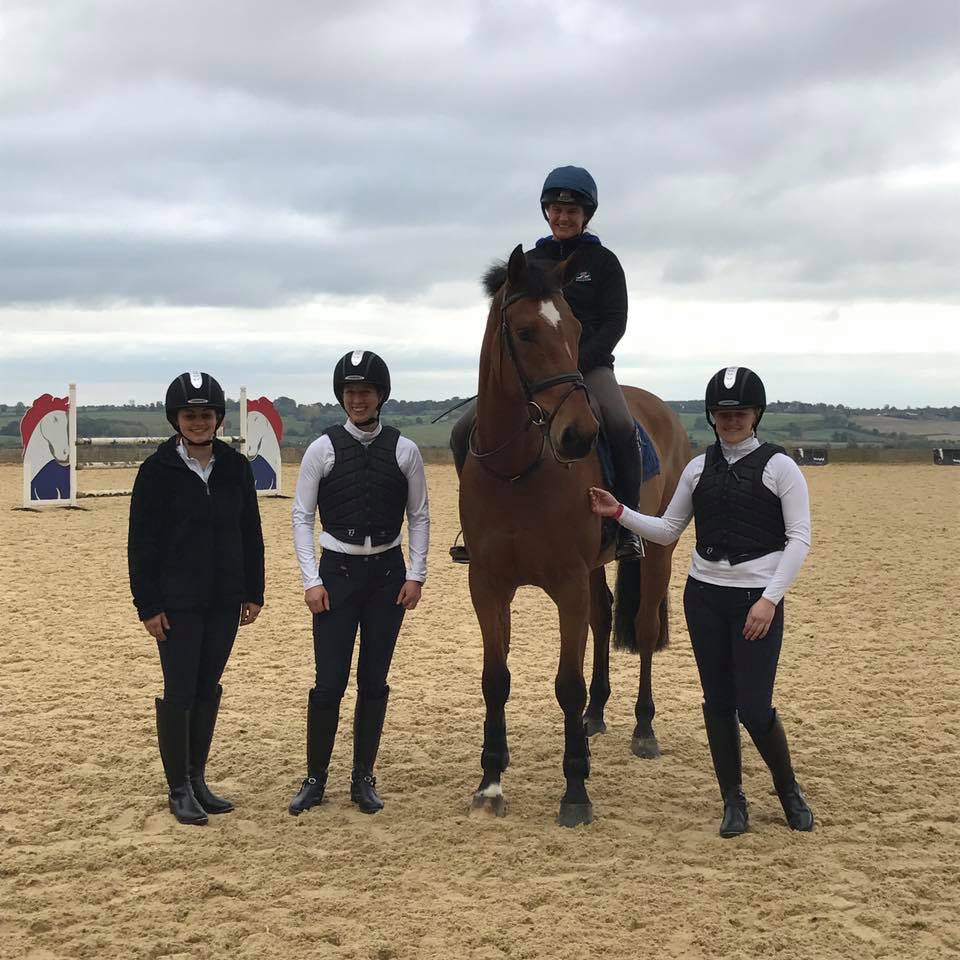Our riders who were all riding beautiful chestnuts, were the competition winners.
Emily and Sprite, Rachel and Monty & Kimberley and Charles.
Day 1: Show Jumping
Rachel and Monty were first to start into the arena and started to warm up. Monty an 11 year old homebred gelding quickly settled and started working well in his new surroundings. Piggy encouraged Rachel to use the whole arena when warming up and work on transitions not only directly from walk to trot, trot to canter and back but also transitions within the pace.
Piggy wanted the riders to be aware of their new surroundings and the potential outside influences that could disrupt the horse’s rhythm when jumping their round. It is good for riders to make a mental note of things outside the arena that could cause a spook. Piggy gave the riders some great tips:
- When at an event make sure you take the time to really know the Show Jumping course. Having confidence in where you are going on the course will allow riders to focus on the horse and its way of going.
- At an event firstly walk the course and then if possible take a few minutes to watch several riders go, then again take another couple of minutes to watch one more before you go in.
- Make a plan for the warm up will help stop nerves taking over, the warm up is not only a place to warm up your horse’s muscles but also to ensure your horse is listening to you, so that he feels supple and attentive to the aids.
- Some horses will need more to warm up than others, it really does depend on the horse and what work best for them.
- When riding the course focus on the quality of the canter and allow the fences to come to you, keep the engine running through the corners and stay focused on the centre of each fence. Piggy wanted all of the riders to start focusing on the quality of the paces especially the canter
Day 2 – and straight into dressage training.
All the riders were set the task of learning a BE test and were encouraged to warm up in the normal way and then straight down the centre to be judged and videoed by Piggy.
The video recording of the first test allowed the riders to hear Piggy’s comments whilst watching back the footage. Again for the riders, the advice to improve the tests was based around quality of the paces, tempo and rhythm and the 3 P’s preparation, preparation, preparation.
Small adjustments to tackling the individual movements of the test made such a difference to the overall marks. For example when riding the Trot – walk – trot movement, which should be 3-5 steps of walk, Piggy encouraged the riders not to leave asking for the trot too late and think ‘forward’ throughout the walk using alternate leg aids. Work out how long is needed for your horse to prepare for the upwards transition. Emily and Sprite could allow 2-3 steps of walk and then hit the transition with accuracy.
Piggy also recommended that all the combinations work on improving their free walk back to collected walk transition. The walk phase of the test can often be over looked when training at home but valuable marks can be gained. The lengthening and collecting of the reins is an exercise that needs lots of practise. It’s an ideal exercise to practise when out hacking. The lengthening and shortening of the reins should be seamless, smooth movement of hands down the reins without tension from the horse as the frame of the neck changes.
Piggy reminded riders to shake out their elbows and shoulders regularly to release any tension being held in the rider’s arms. This small exercise really helped all of our riders mentally to stay more relaxed. With ‘bottom half long and top half tall’, riders worked on their positions. Piggy helped each rider work on individual parts of the test and then back to the centre line to re-ride the test.
Rachel, Emily and Kimberley all showed marked improvements in their 2nd test and came away from the test riding session with lots to work on at home.
Lunch and then on to X-Country practice. With the ground very wet we had to move our X-Country style fences to the arena. A combination of skinnies, corners, coffin and challenging lines gave the riders plenty to think about. The warm up was based around some forward and back work in the canter. Piggy want to see them extend the canter through the long side and collect the canter on the short side, all in a jump seat with no disturbance in the rider’s position or the tempo of the horse. This was a very good exercise to show how independent the rider’s seat was and how against (if at all) the horse was against the hand.
Piggy encouraged all the riders to drop their hands to the base at of the horse’s neck, allowing the hands to rest on the wither was valuable to avoid the riders arms and wrists getting tense throughout the x-c course. Placing the knuckles on the horse’s neck will also help support the rider when needing a strong half halt with added leverage against the neck…
Practicing in the arena improved the accuracy of the riders approach to each fence and particularly to the double of skinnies in the corner of the arena. There wasn’t much room for error without causing a run out, which made the riders up their game!




